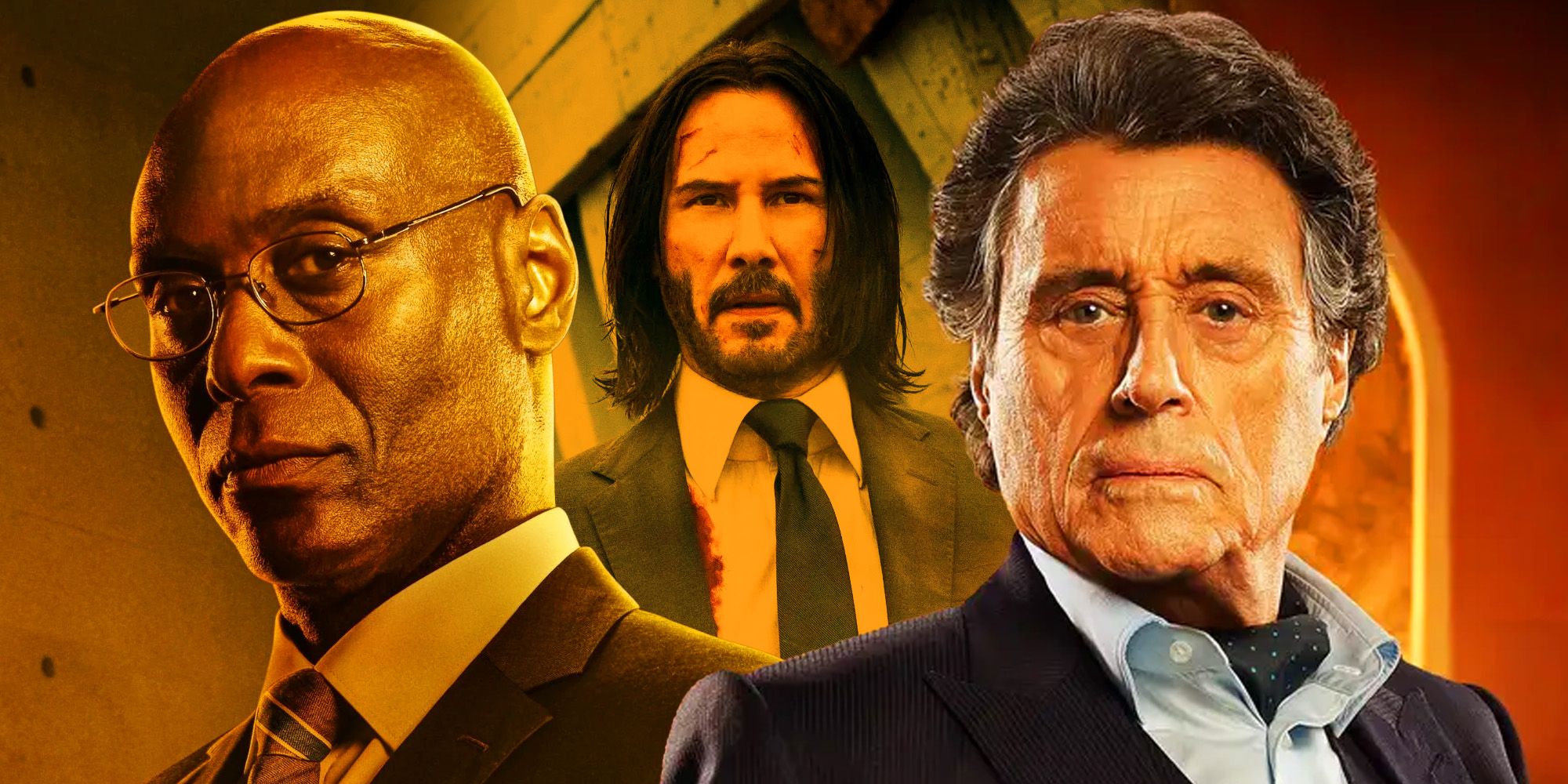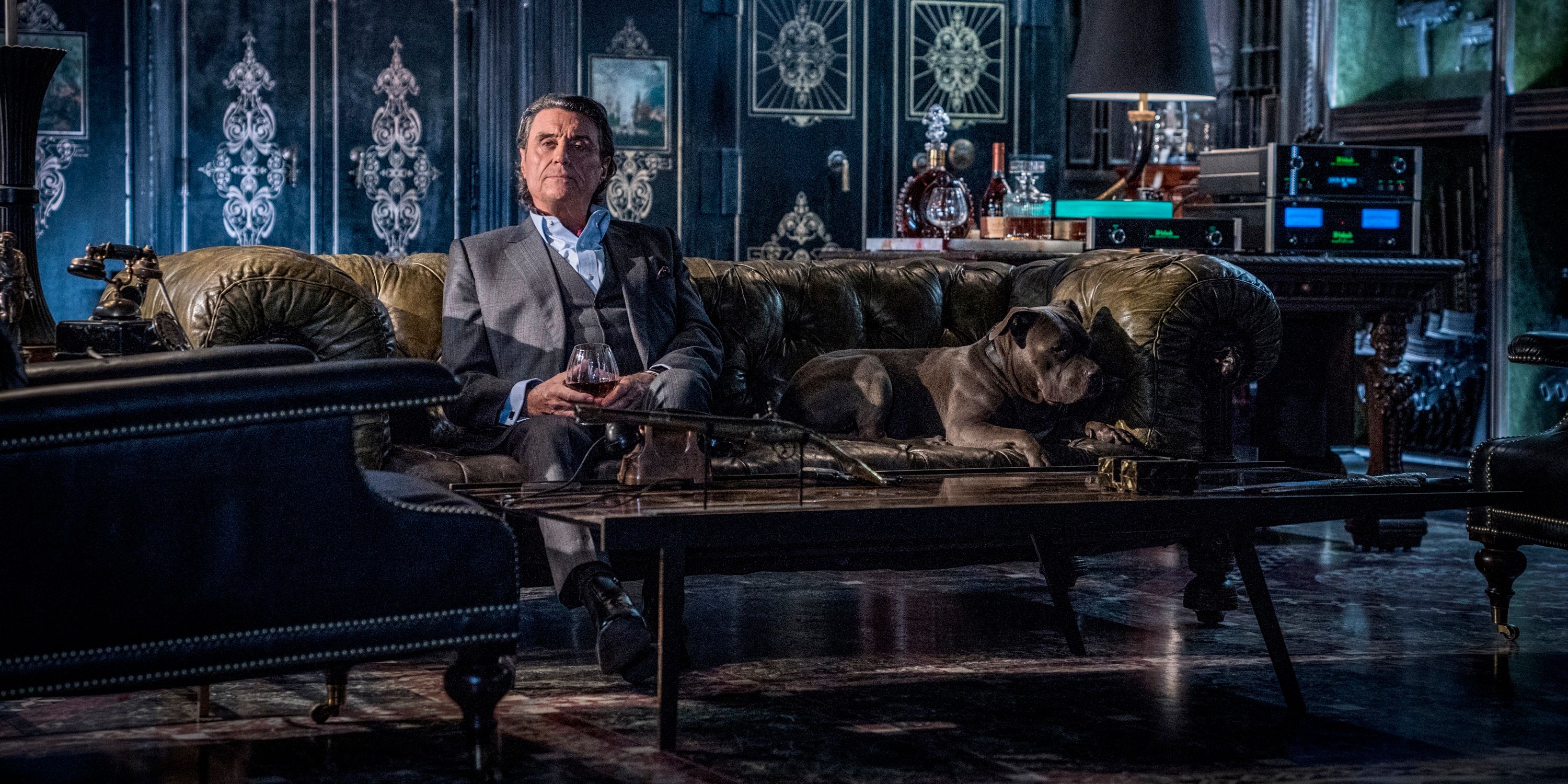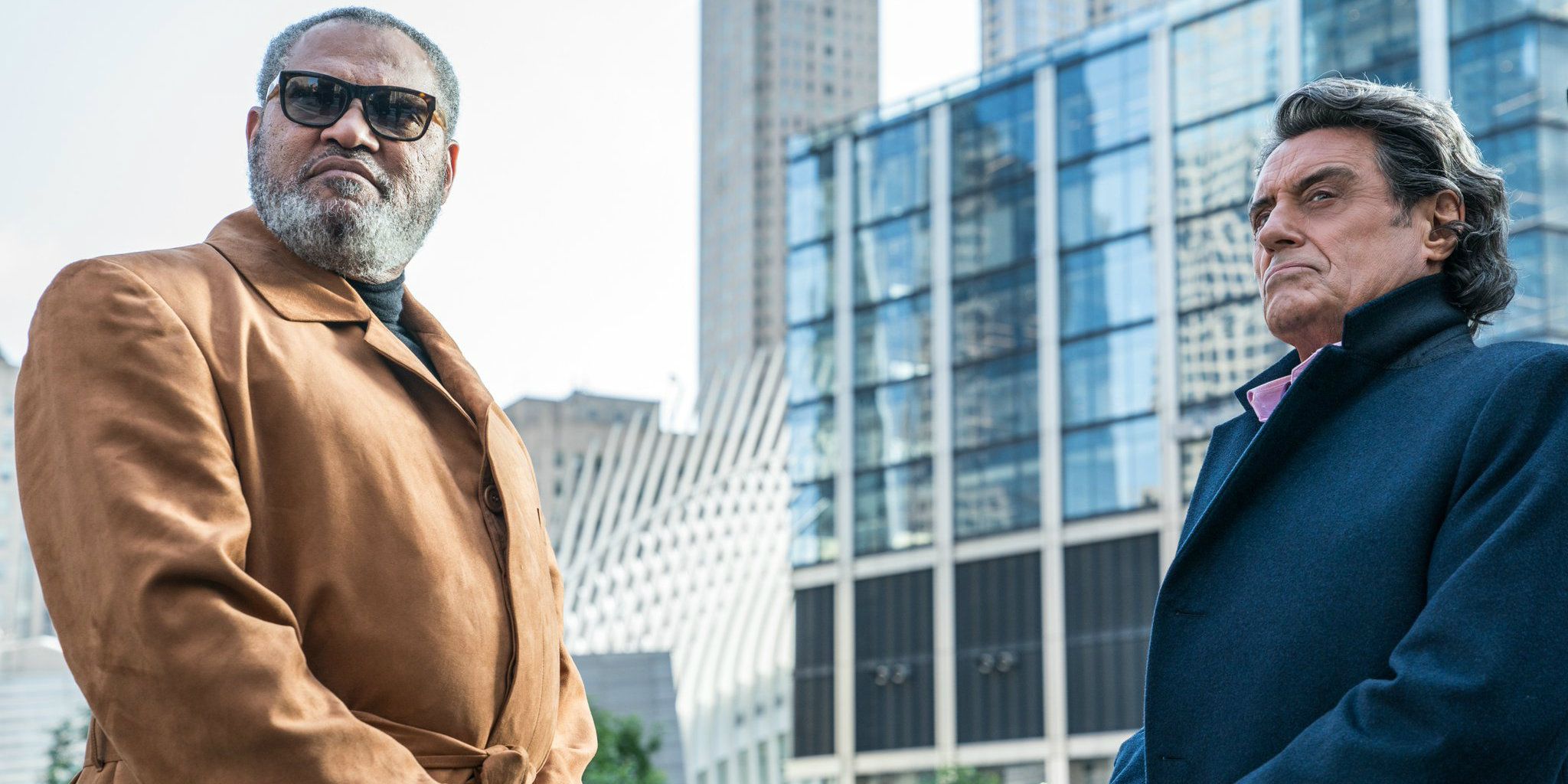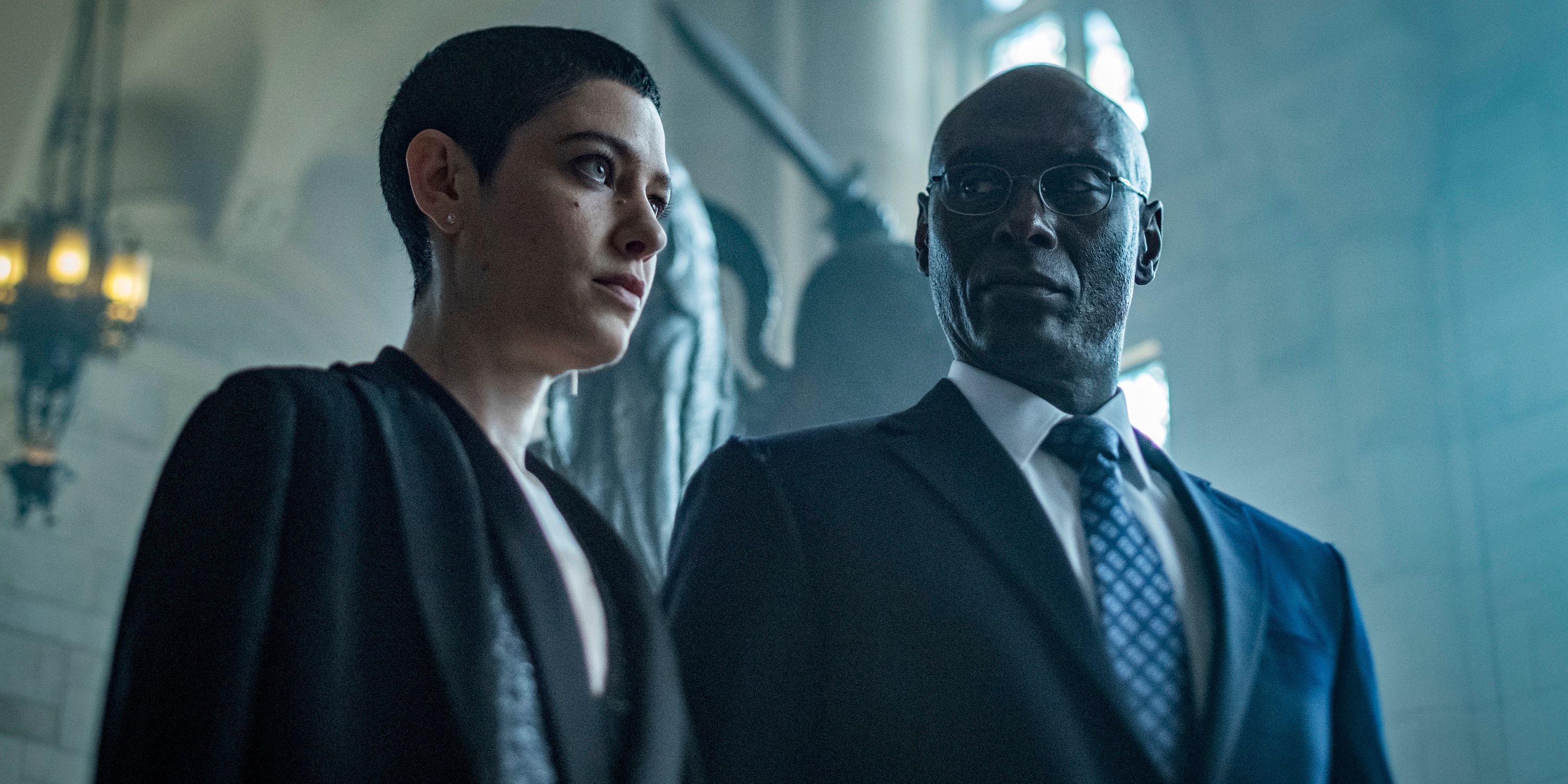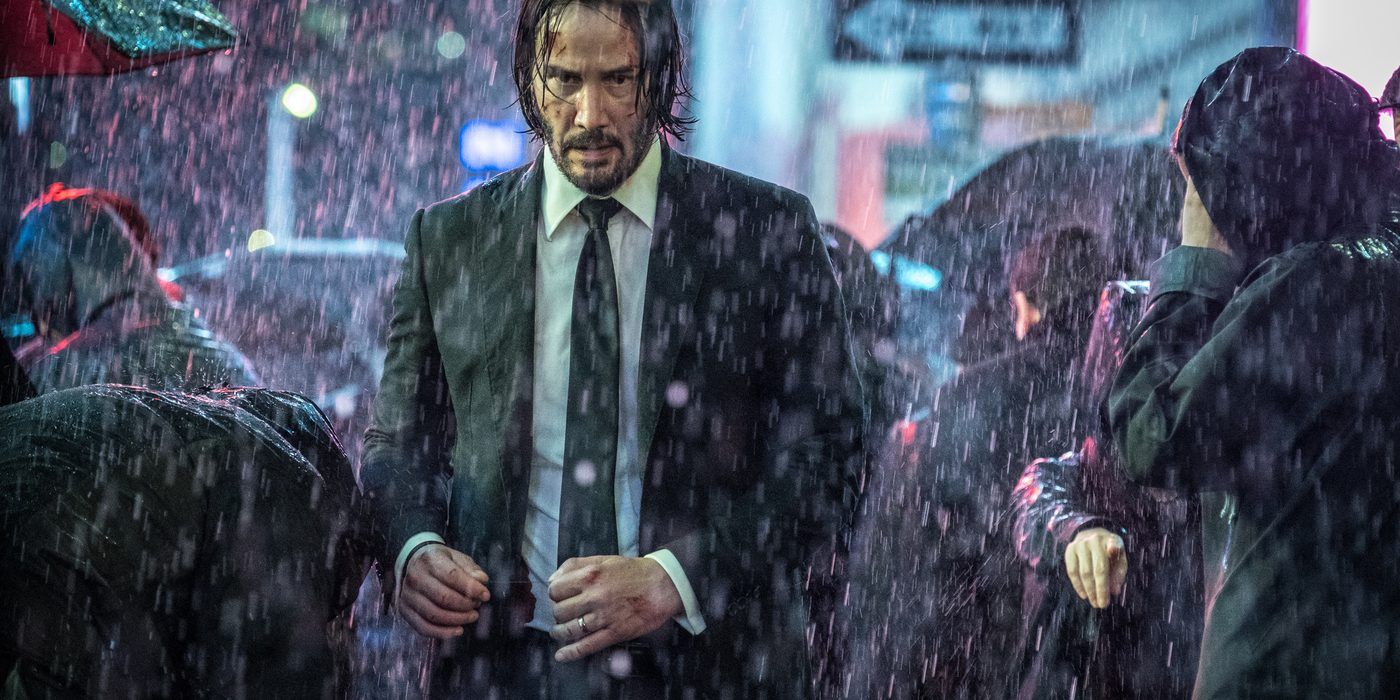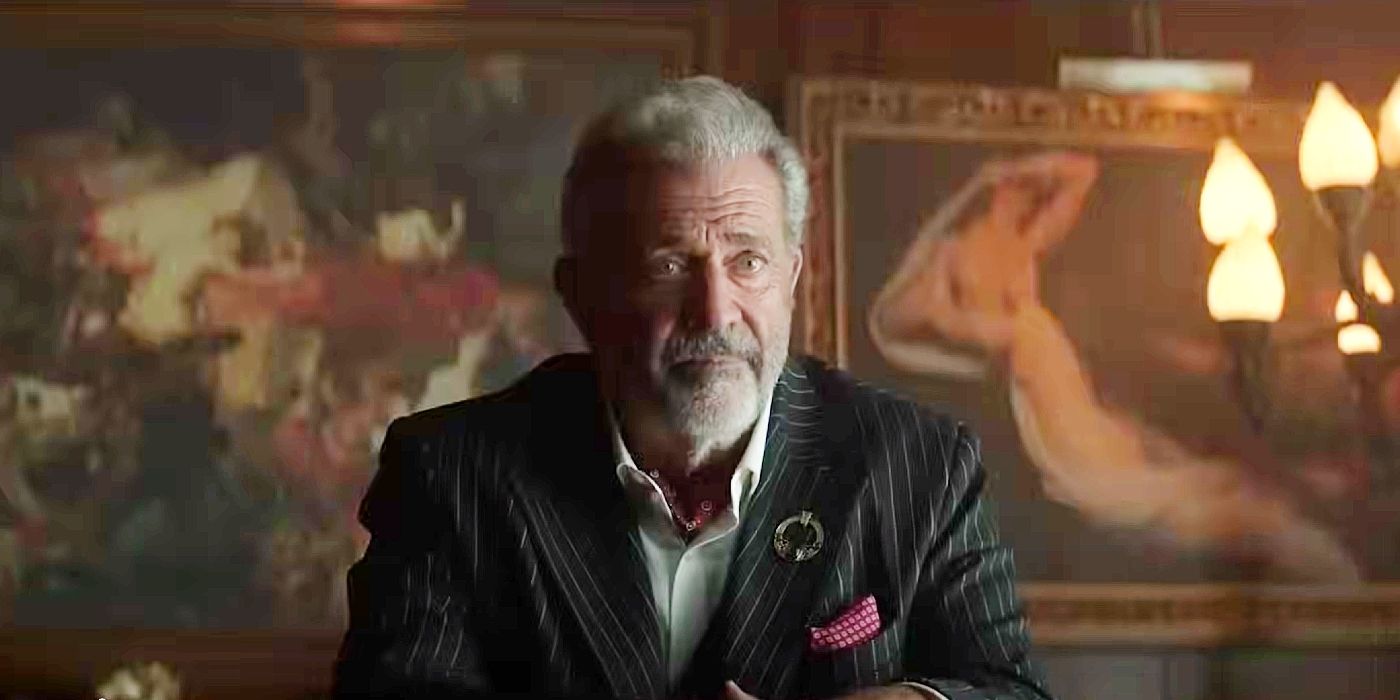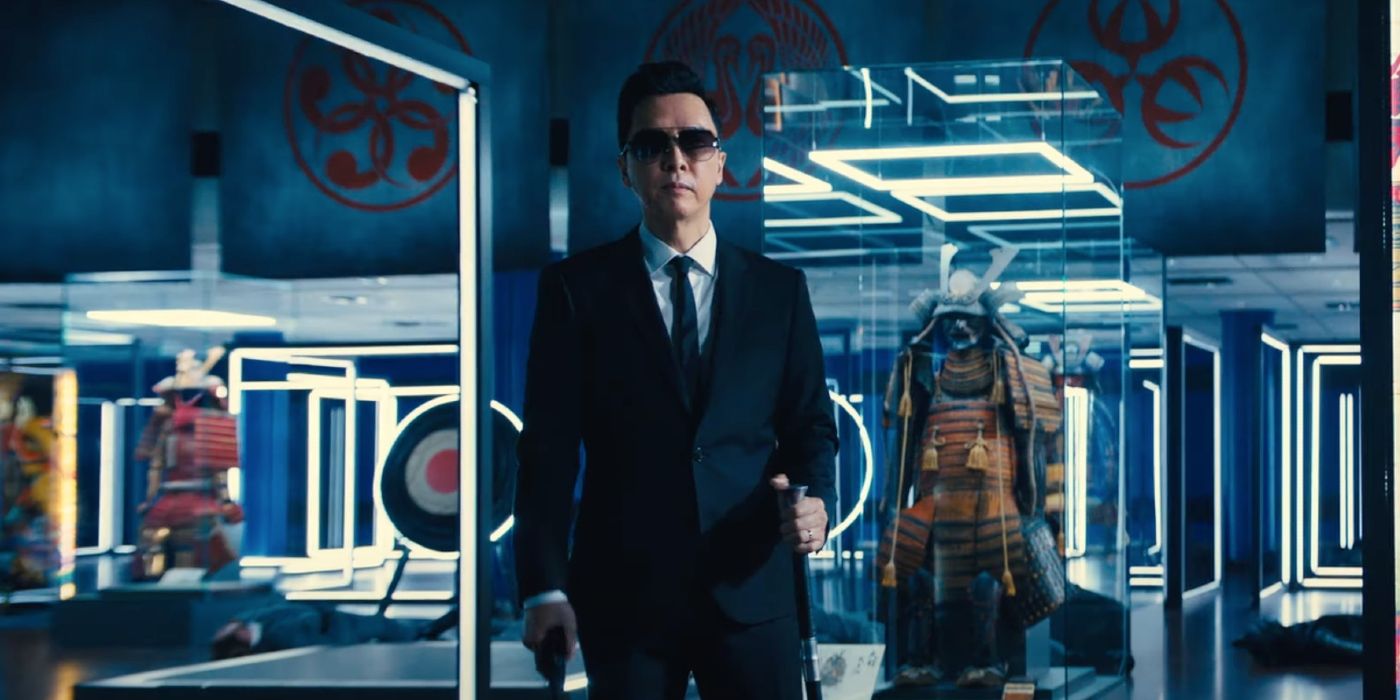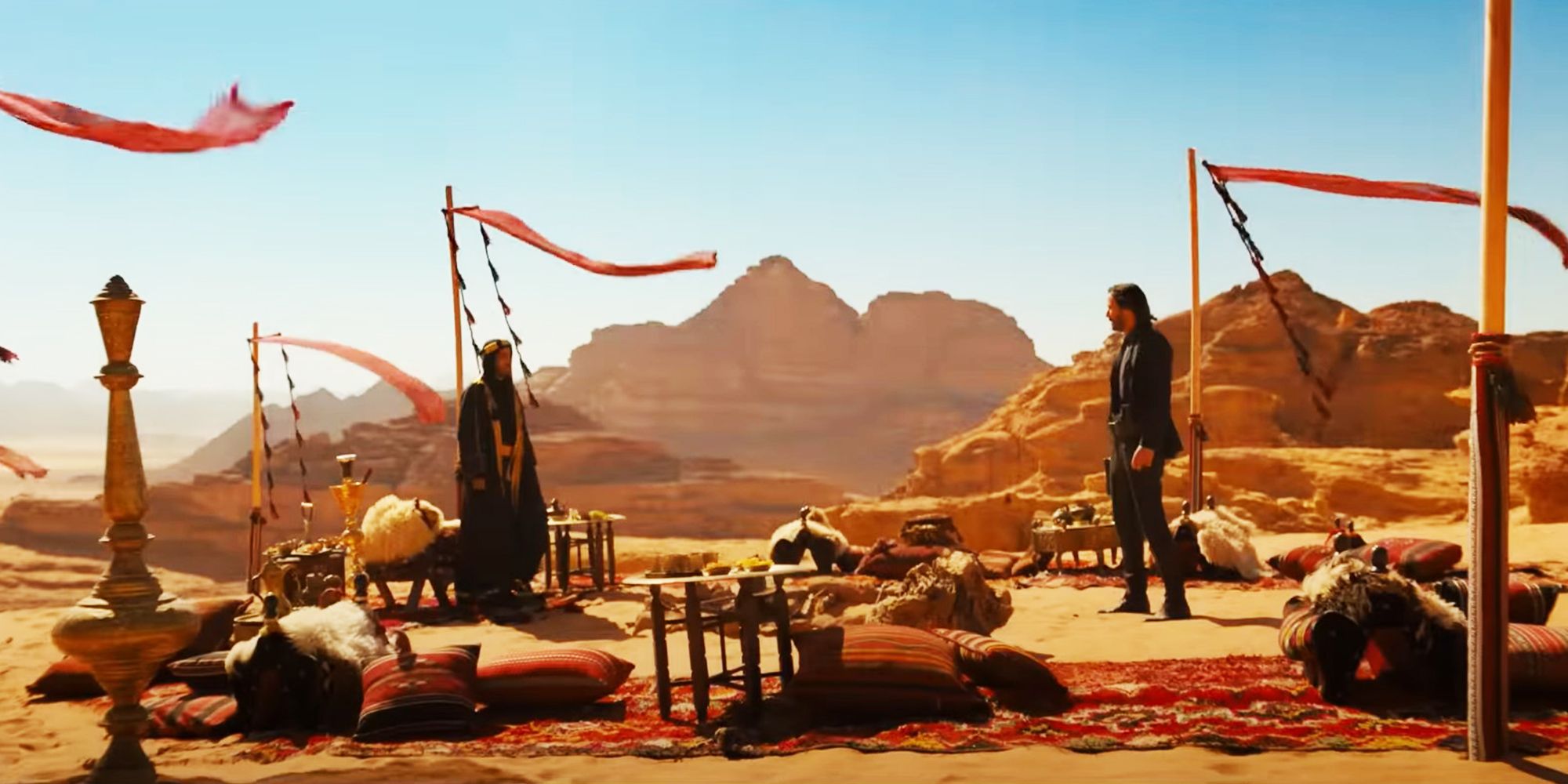Summary
- The John Wick 3 ending introduces a stunning betrayal by Winston, the Manager of The Continental, setting the stage for John Wick: Chapter 4 and The Continental prequel series.
- John Wick survives his wounds and is taken in by The Bowery King, creating a new underground subplot and expanding the world of the franchise.
- John Wick: Chapter 4 focuses on a clash between class systems and revenge against The Continental and The High Table, while also setting up the Continental TV show.
The John Wick: Chapter 3 – Parabellum ending includes a stunning betrayal and creates a cliffhanger and the John Wick 3 ending expertly sets up John Wick: Chapter 4 and The Continental. After killing Santino D’Antonio, John Wick has been declared “excommunicado,” meaning he’s officially been blacklisted by The Continental; a safe zone for assassins and other underworld figures. There’s a $14 million bounty on Wick’s life, and a crime lord council named The High Table plots against him. Wick travels to Casablanca for help - introducing Halle Berry's Sofia - and then back to New York City.
In New York, John finds The Adjudicator (Asia Kate Dillon) of the mysterious High Table waiting, along with numerous assassins. The twist in the John Wick 3 ending sees John being betrayed by Winston (Ian McShane), the Manager of The Continental, raising the question of why Winston shot John Wick. Despite being heavily wounded once again, it isn't long until John Wick gets ready for more of the high-octane action the series has become known for. It all helped set the stage for the sequel and The Continental prequel series.
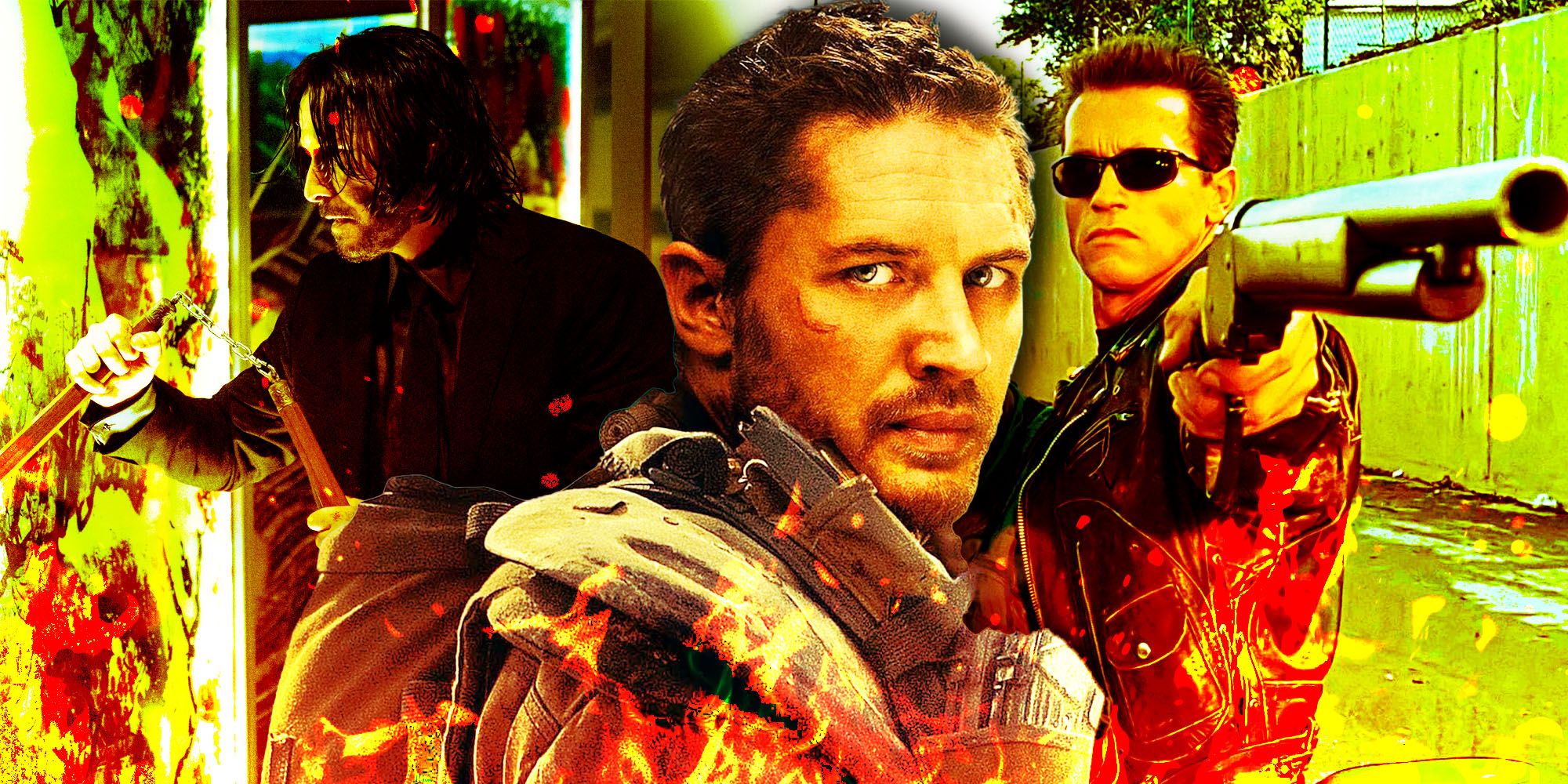
10 Best Action Movies Of All Time, Ranked
With massive hits like Inception, Terminator 2, and The Matrix, the most influential action movies of all time are absolutely mindblowing.Winston "Kills" John Wick To Save The Continental From The High Table
The John Wick 3 ending, explained from John's point-of-view, is about Winston's fate. John has a give-and-take relationship with The Continental’s owner. In the comparatively shorter original John Wick, Reeves’ character has just returned from retirement, but he’s respected by Winston for being a living legend. By this point, Wick hasn’t blatantly disrespected Winston. In John Wick: Chapter 2, though, he breaks the golden rule and kills a Camorra lord at The Continental. Unsurprisingly, Winston declares Wick “excommunicado” for harming the institution’s reputation (along with his own). Like John Wick, Winston lives by a personal code of conduct but also manipulates the system to his advantage.
In the John Wick 3 ending, Reeves’ character makes a deal with The John Wick Elder of the High Table. John agrees to kill Winston in order to have the $14 million bounty on his head canceled. By the film's climax, Wick refuses to carry out the order, prompting The Adjudicator to “deconsecrate” The Continental, meaning killing is now allowed on Continental grounds. Winston shoots John Wick after having negotiated with The Adjudicator to return to the fold. In this cinematic universe, the characters genuinely believe that Wick has been eliminated. But the betrayal is merely a plot device to raise the stakes even more for Parabellum's ending.
John Wick Survives - And Is Taken To The Bowery King
It seems implausible that someone could survive both a gunshot wound and a lengthy fall from a New York City hotel — but this is John Wick. Naturally, he’s wearing a bulletproof vest, and manages not to break every bone in his body. However, he still needs to find a place to recover while escaping the High Table's wrath for violating the Continental's neutrality in John Wick; Chapter 2. John Wick 3 – Parabellum sets up a new underground subplot with this narrative turn, as well as The Continental series on Peacock.
For previously helping John Wick in John Wick: Chapter 3 – Parabellum, The Bowery King is punished by The Adjudicator. He receives seven lashes (or slashes) from the assassin Zero, but shockingly survives and appears in the John Wick 3 ending. Just like in John Wick: Chapter 2, he’s going to treat Reeves’ injured character. Both men have a major beef with The High Table, and both men are essentially dismissed. This concept strengthens the inherent tension within the franchise between the High Table's elaborate system of control and the violent world it rules over.
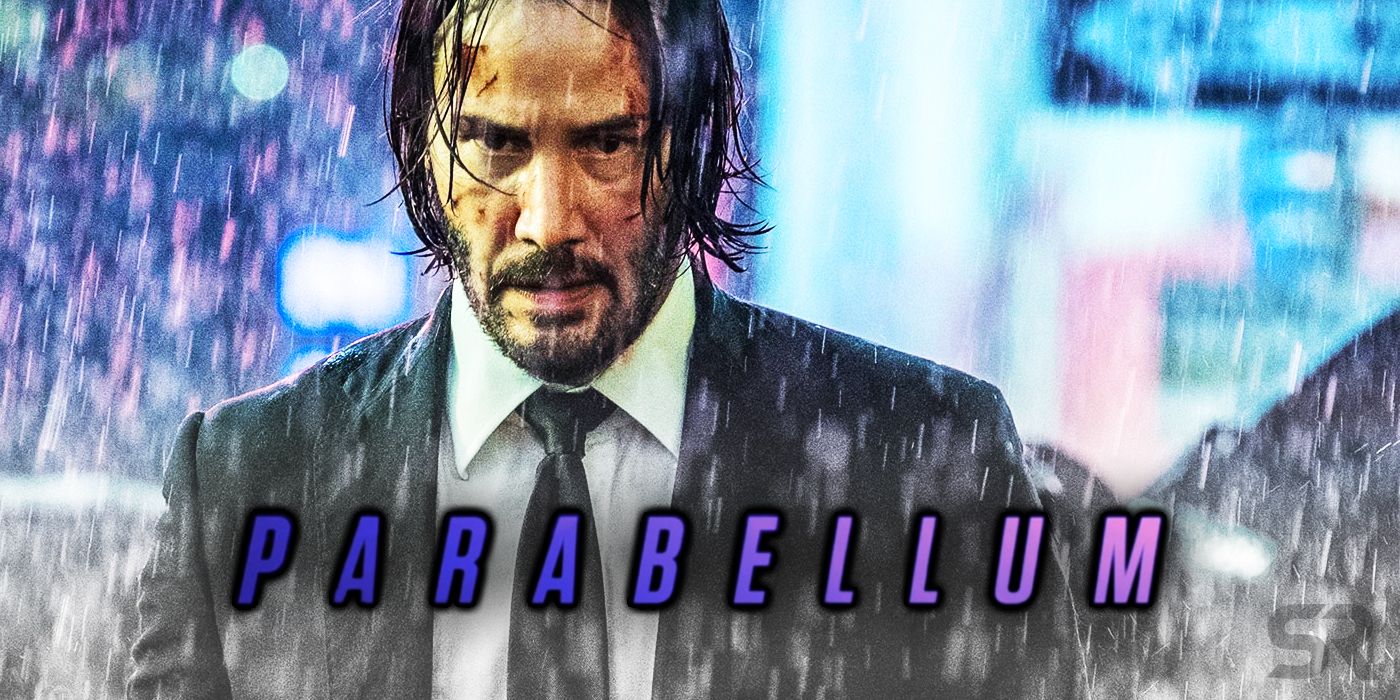
John Wick 3's Parabellum Title REAL Meaning Explained
John Wick: Chapter 3 sports the fancy subtitle Parabellum, but its real meaning isn't what we thought. Here's what it means for the franchise.What John Wick 3's Ending Really Means
The John Wick 3 ending explained how the storyline for John Wick: Chapter 4 can go. While John Wick 3 is primarily about survival and immediacy, John Wick: Chapter 4 provides more character depth. When John Wick manages to survive, he’s assisted by The Tick Tock Man, an associate of The Bowery King — who himself is the head of the Soup Kitchen, an underground intelligence network. The John Wick franchise examines loss, perspective, and existentialism.
These concepts aren't limited to John, though. Thus far, the John Wick movies have focused primarily on Keanu Reeves' character, but the world will soon expand if the Parabellum ending is any indication. John Wick: Chapter 3 – Parabellum foreshadows what’s to come through The Bowery King’s dialogue. He states, “Under the table is where shit gets done.” This quotation suggests that there’s a clear narrative conflict between characters from the lower depths and those with immense power, such as the High Table and possibly even John Wick's family.
John Wick: Chapter 4 Is About Revenge Against The Continental & High Table
For John Wick 4, the franchise has subtly changed its premise. Rather than focusing on one man’s quest for vengeance, the storyline now involves clashes between class systems. It’s a David vs. Goliath story; the underground against The High Table. This is perfectly put into action in the very opening scene when Wick assassinates The Elder. This allows the franchise to represent various demographics, and to offer up a societal commentary, all the while staying true to practical concepts like shelter, survival, and personal bonds, like the friendship between John Wick and Winston.
Still, the heart of the story remains the same. John Wick has been betrayed, and he's out for revenge against the whole system, though The Adjudicator is mysteriously absent in John Wick 4. While Winston is the disloyal friend who left John dead, it's revealed that the shooting was Winston and John's backup plan. Now, John Wick is even more bloodthirsty, and he'll do anything to erase his bounty and take down the Marquis and anyone who gets in his way. John Wick: Chapter 4 sees John literally take on the upper class in the form of the Marquis de Gramont, who challenges him to a duel that is anything but fair.
How John Wick 3's Ending Sets Up The Continental TV Show
In January 2018, Starz greenlit the John Wick spinoff series The Continental, which doesn't feature Keanu Reeves. The series is based on the franchise’s neutral ground hotel, though Ian McShane won’t reprise his role as Winston. Instead, the series is set in the 1970s and features a young Winston (Colin Woodell), with other cast members including Mel Gibson, Jessica Allain, Mishel Prada, and Katie McGrath as a previous version of The Adjudicator. While the series was originally greenlit at Starz, Lionsgate later announced that it had moved to Peacock.
The Peacock exclusive series is all about how Winston comes into the management of the titular hotel. More interestingly, The Continental continues John Wick's exploration of the class system, possibly even more so, as the series' backdrop is the mafia's rise to economic power. More interestingly, the series revolves around the coin press that creates the assassins' world's currency. The series is all about how the 1970s The Continental manager, Cormac O'Connor, is attempting to get back the stolen coin press, as it's insinuated that whoever has the coin press has the power.
What Happens In John Wick: Chapter 4
John Wick 3 explained that the titular assassin was still alive after the fall from The Continental's terrace, and The Bowery King gave him shelter and a place to heal. John Wick: Chapter 4 picks up eight months after the final scene in the threequel, as he has fully recovered and is ready to get back his freedom. The assassin starts by killing The Elder in Casablanca, and he then seeks refuge in the Tokyo Continental. After murdering The Elder, Wick's bounty continues to increase and the entire world is seemingly out to kill him, including his old friend, Caine, and his new enemy, Mr. Nobody.
These assassins are all being ordered by the Marquis de Gramont, who also works for the High Table. Ultimately, using guns, cars, swords, and dragon breath bullets, Wick unsurprisingly murders everybody who comes at him. John Wick: Chapter 4 ends with a duel between Caine and Wick. Caine has the upper edge and successfully kills Wick, but not before Wick shoots the Marquis in the head. The final scene sees Winston and The Bowery King visit John's grave, but with John Wick 5 in development, it's unlikely that Wick is actually dead.
John Wick: Chapter 4 Being Even Bigger Than Parabellum
While the John Wick: Chapter 3 - Parabellum ending explained where Keanu Reeves' eponymous assassin is headed, along with the world-building and revenge plot, the action setpieces and fight choreography are more impressive than ever. The final hour of the almost three-hour epic sees one action sequence seamlessly flow into the next. The movie sees Wick drifting around the Arc de Triomphe against oncoming traffic as nails one headshot after another. What follows is the thrilling top-down sequence in the French house, and then the comedy violence of the 222 steps, ending with a surprisingly somber duel.

